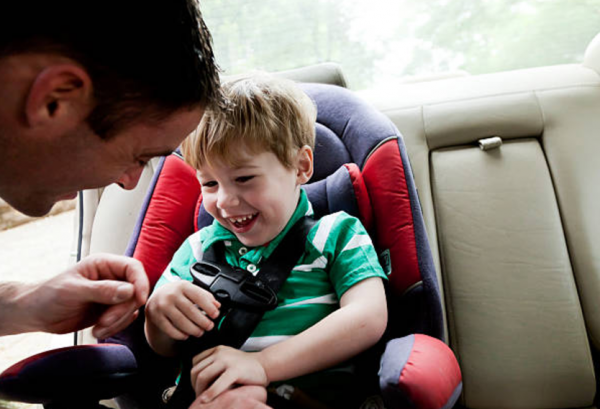Did you know that every 33 seconds a child under 13 is involved in a car crash in the United States due to incorrect or misuse of a car seat?
No? I didn’t realize that startling statistic either. I also did not realize that over half of car seats are either installed or used incorrectly, and 1 in 3 children killed in car crashes in 2015 was not in a car seat, booster seat, or seat belt at the time of the crash.
I do not have children in car seats myself anymore – actually, my children have been driving their OWN cars now for the last 3 years. And we are still adamant about them buckling up both in the drivers and passengers seat. However, I do have many friends with kids who are still in car seats or booster seats and think that this is an important message to spread to whoever is willing to listen!

Child Passenger Safety Week
September 17-23, 2017 – this is basically THE perfect time to brush up on car seat safety tips and make sure your child is in the right seat, with the right fit and installation.
During Child Passenger Safety Week, more than 1000 events are expected in 45 states across the country to raise awareness for proper car seat installation and usage. The week culminates in “Seat Check Saturday,” where Certified Child Passenger Safety Technicians will help parents and caregivers make sure their car seats are installed correctly. In most cases, this service is FREE. You really can’t beat that – plus they make these events a ton of fun for kids!
What You Need to Know:
There are many car seat choices on the market. Use the information below to help you choose the type of car seat that best meets your child’s needs or print out this PDF (350 KB).
- Select a car seat based on your child’s age and size, choose a seat that fits in your vehicle, and use it every time.
- Always refer to your specific car seat manufacturer’s instructions (check height and weight limits) and read the vehicle owner’s manual on how to install the car seat using the seat belt or lower anchors and a tether, if available.
- To maximize safety, keep your child in the car seat for as long as possible, as long as the child fits within the manufacturer’s height and weight requirements.
- Keep your child in the back seat at least through age 12.
Be smart! To make sure you have the right seat for your child, visit NHTSA.gov/TheRightSeat, or find a Child Passenger Safety Week event in your area.

During Child Passenger Safety Week, many communities will have Certified Child Passenger Safety Technicians on-hand to provide education on how to use car seats, booster seats, and seat belts for children. To find events near you, including free car seat checks, visit bit.ly/CPSTech. If you cannot make it to an event, resources like NHTSA.gov/TheRightSeat, have videos about how to install car seats and booster seats correctly and guides to picking the right seat by age and size.
And – if you’re not too busy - the NHTSA is hosting a fun twitter chat on September 20th from 3-4pm EST using #TheRightSeat to learn more about child passenger safety and hear some great tips from other moms, dads, and grandparents on child passenger safety and traveling with kids!

This post comes from the TODAY Parenting Team community, where all members are welcome to post and discuss parenting solutions. Learn more and join us! Because we're all in this together.
